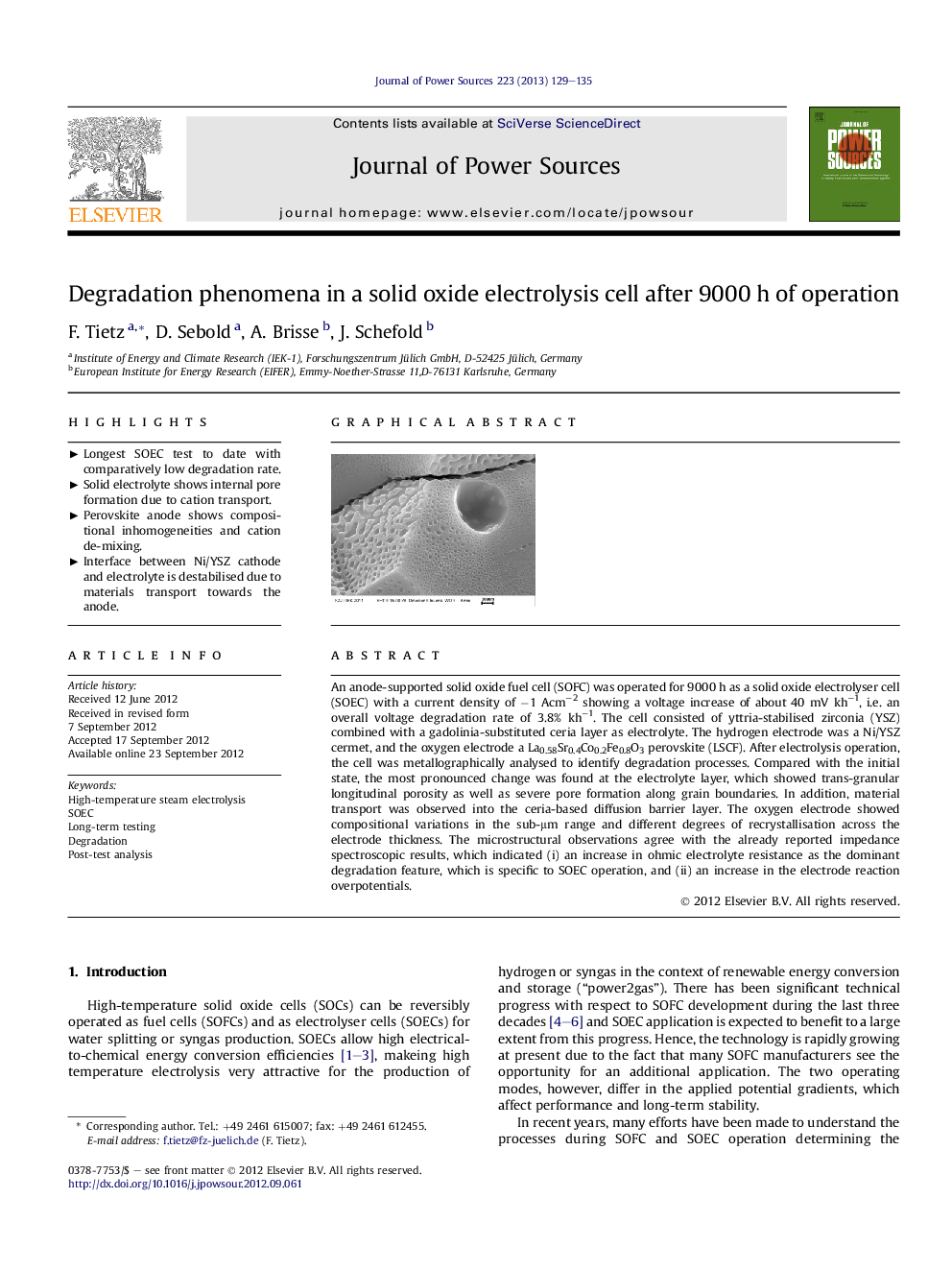| Article ID | Journal | Published Year | Pages | File Type |
|---|---|---|---|---|
| 1287656 | Journal of Power Sources | 2013 | 7 Pages |
An anode-supported solid oxide fuel cell (SOFC) was operated for 9000 h as a solid oxide electrolyser cell (SOEC) with a current density of −1 Acm−2 showing a voltage increase of about 40 mV kh−1, i.e. an overall voltage degradation rate of 3.8% kh−1. The cell consisted of yttria-stabilised zirconia (YSZ) combined with a gadolinia-substituted ceria layer as electrolyte. The hydrogen electrode was a Ni/YSZ cermet, and the oxygen electrode a La0.58Sr0.4Co0.2Fe0.8O3 perovskite (LSCF). After electrolysis operation, the cell was metallographically analysed to identify degradation processes. Compared with the initial state, the most pronounced change was found at the electrolyte layer, which showed trans-granular longitudinal porosity as well as severe pore formation along grain boundaries. In addition, material transport was observed into the ceria-based diffusion barrier layer. The oxygen electrode showed compositional variations in the sub-μm range and different degrees of recrystallisation across the electrode thickness. The microstructural observations agree with the already reported impedance spectroscopic results, which indicated (i) an increase in ohmic electrolyte resistance as the dominant degradation feature, which is specific to SOEC operation, and (ii) an increase in the electrode reaction overpotentials.
Graphical abstractFigure optionsDownload full-size imageDownload as PowerPoint slideHighlights► Longest SOEC test to date with comparatively low degradation rate. ► Solid electrolyte shows internal pore formation due to cation transport. ► Perovskite anode shows compositional inhomogeneities and cation de-mixing. ► Interface between Ni/YSZ cathode and electrolyte is destabilised due to materials transport towards the anode.
